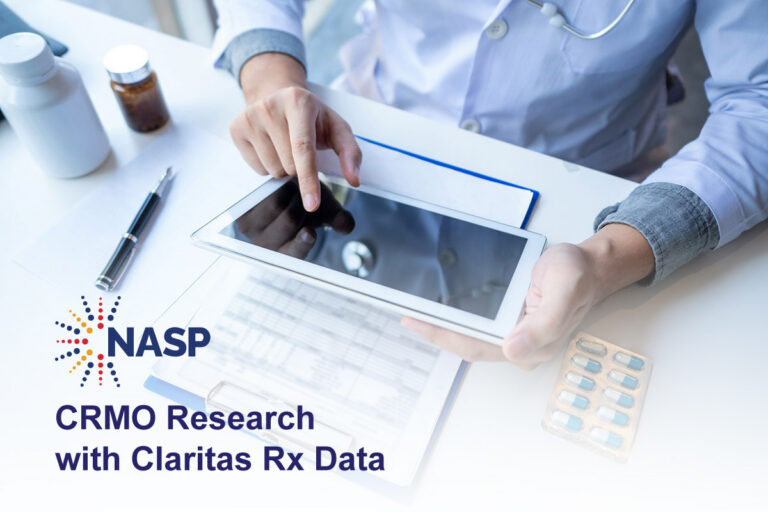When examining the value of rare disease therapies, public payers focus on several aspects of cost control. These include a therapy’s efficacy, its safety and reliability, and its financial impacts, including list price, access options and budgetary impacts.
The decisions public payers reach about rare disease therapies depend heavily on the data they examine. Better data collection, analysis and communication through a digital platform can provide better data to public payers, resulting in better coverage decisions.
What Cost Control Measures Do Public Payers Expect to See?
“Assessing the ‘value’ of rare disease treatments poses numerous challenges and is a topic of debate” both in the U.S. and in other countries, write Nathan Yates and Jennifer Hinkel in a 2022 article in Clinical and Translational Science.
Questions of value often boil down to the costs of a rare disease therapy versus the impacts — although how both cost and impact are measured remains an area of contention.
Efficacy
Efficacy remains a top concern for public and private payers alike.
Efficacy takes center stage in discussing rare disease therapies, where small clinical trial sizes and other barriers result in scarcer information than is available for most other pharmaceuticals.
Many policy proposals focus on managing the cost of rare disease therapies by focusing on outcomes. One such proposal is the outcomes-based contract, which makes payments for rare disease therapies contingent on the benefit the therapy provides to a patient, write Grace Hampson and fellow authors in the Journal of Comparative Effectiveness Research. To address such mechanisms, drug manufacturers need to provide data-backed evidence of efficacy.
Safety and reliability
New rare disease therapies enter the market amid a host of unknowns.
Despite excitement over the curative potential of many rare disease therapies, new therapies’ “long-term utility has not generally been established at the time of market entry owing to their novelty, and their durability is not fully established,” write Scott Gottlieb and fellow researchers in a BCBSA/Aspen Institute white paper. Similarly, the safety and reliability of these therapies may not yet be fully understood.
For public payers, safety and reliability concerns may become enshrined in cost-control measures like outcomes-based contracts. Value-based pricing regulations are also likely to take these measures into account, write Caroline Pearson, Lindsey Schapiro and Steven D. Pearson.
Financial Impacts
List price and budgetary impact play a role in cost and value considerations as well.
Prices often serve as a starting point for discussions of value. Public payers may also consider how other sources of payment, like private coverage and drug assistance programs, defray the costs of rare disease therapies for patients.
Opportunities to access rare disease therapies often affect public payers’ data and experience in funding these therapies, but their biggest impact typically occurs post hoc. For instance, the Pfizer RxPathways program sets income limits for participants, accepting only patients that do not qualify for public payer assistance. For those who qualify for Medicaid or Medicare, the program offers support in applying for one or both programs. The program assists Medicaid or Medicare enrollees only when they cannot afford their copayments.
Thus, CMS policymakers see the effects of such programs in the enrollment of patients who might otherwise seek assistance from drug manufacturers. Yet policymakers may not see the financial impacts of patients whose cases are accepted by manufacturers’ assistance programs.
Choosing Metrics to Demonstrate Value to Government Payers
Choosing the right information to demonstrate value and explain cost controls to government payers may require pharmaceutical companies to answer several key questions:
- How are public payers measuring value?
- What costs concern public payers? What data addresses or explains those costs?
- How do third party actions, like those of private payers or patient assistance programs, affect list prices and budgetary impacts?
Many quantitative metrics for addressing these questions are well-defined, and many are required by public payers. Providing context in the form of qualitative information, however, can provide a more well-rounded understanding of value and cost considerations.
Patient Experiences
Incorporating patients’ behavior and experiences into data-gathering efforts can provide valuable insight into a drug’s efficacy, safety and impact on overall well-being. This information is essential when handling outcomes-based contracts and other forms of payment that depend on patients’ experiences.
In a 2023 article, Siva Narayanan proposes a Payer-Patient Engagement Framework (PPEF) to connect patients’ preferences and experiences to payers’ formulary decisions. Narayanan writes that such a framework could help payers make more ethical and evidence-based formulary decisions regarding rare disease medications. The result could be better access to orphan drugs and better patient outcomes.
Research and Information
Connecting public payers to high-quality information about rare disease therapies is essential. Information in peer-reviewed journals, clinical guidelines, and from key opinion leaders can all provide insight into the value of a particular therapy for a particular disease, write Darcy Krueger and Emanual Maverakis in an opinion column supporting the Access to Rare Indications Act.
To organize this information, pharmaceutical companies may use a digital platform to streamline information sources. The right digital tools can analyze incoming information and generate insights and visualizations to aid public payer decision-making.
Tracking the Data Public Payers Want to See
Because the cost of rare disease therapies can be high, both public and private payers are turning toward pharmaceutical manufacturers to find ways to share the risk associated with rare disease therapy development, says Philip Cyr, senior vice president at Precision Value & Health.
Tracking data is the first step to providing context for public payers — context that can radically alter public decision-making.
In a 2022 study of rare disease drug spending in Canada, Richard Lech and fellow researchers examined the growth of Canadian government spending on rare disease therapies. The researchers found that the historical and projected dollar amount of this spending increased rapidly between 2010 and 2025. This fact might lead some policymakers to pull back on their support for public spending on rare disease medications.
Yet the authors also examined the context in which this spending increased. In doing so, they found that overall projected public spending on rare disease therapies “remains a fraction of total public drug spending.” This context prompted the researchers to reach the conclusion that “limiting [drugs for rare diseases] access because of this growth [in spending] is not aligned with Canadian patient or societal values.”
Canada provides an instructive example because its extensive public health system engages public payers in daily decisions about the value and cost of rare disease therapies. Lech et al. demonstrate the importance of placing value and cost metrics in context to aid policymakers.
Value is a big question for public payers. Demonstrating value often means illustrating relevant cost control measures in addition to the benefits of a particular therapy.
A unified digital platform can help illuminate the overall value of a rare disease therapy. By tying in the impacts of various forms of cost control and comparing these to efficacy and safety data, digital platforms and their robust analytical tools can demonstrate to public payers the true value of a particular rare disease therapy.
Images by: dragoscondrea/©123RF.com, lightfieldstudios/©123RF.com, marvent/©123RF.com



